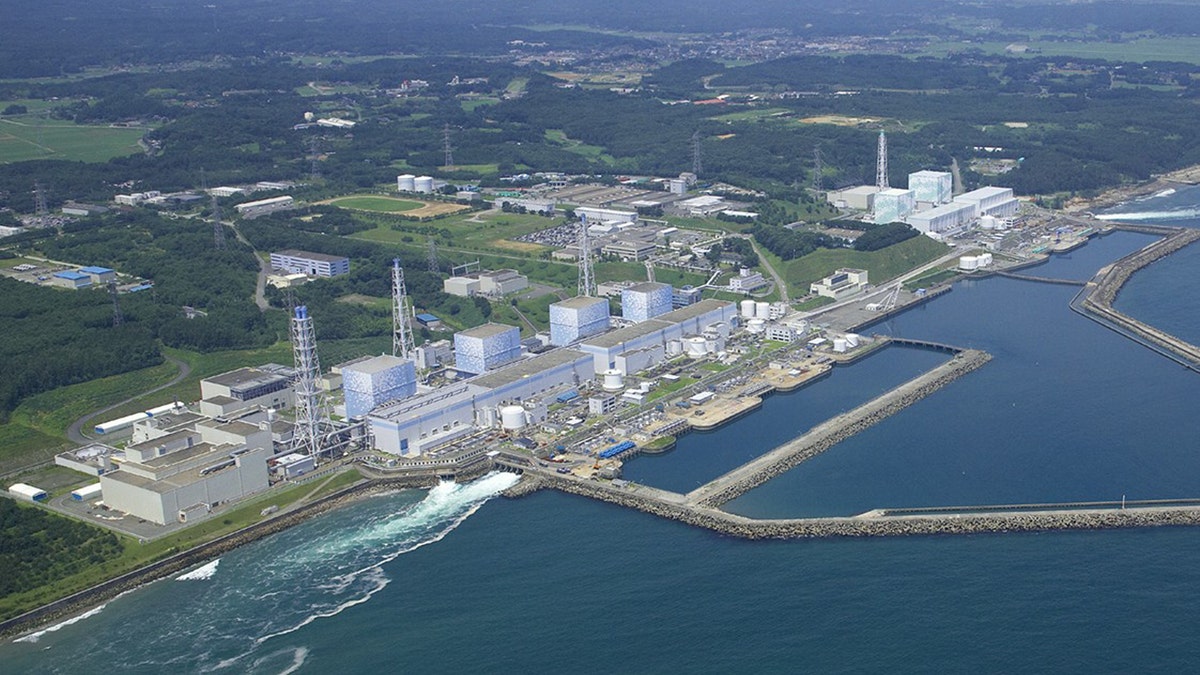
The Fukushima Daiichi Nuclear Power Plant reactors stand in line intact in Okuma town in Fukushima Prefecture, northeastern Japan. Radiation has covered the area around the Fukushima Dai-ichi plant and blanketed parts of the complex, making the job of rendering the plant safe so that it doesn't threaten public health and the environment, or "decommissioning", a bigger task than usual. (AP2011)
TOKYO -- Japan announced new guidelines Friday for how its nuclear power plants try to prevent disasters like last year's meltdowns, as the government aims to ease public concern about restarting idled reactors.
Facing a national power crunch, the government is anxious to restart two reactors in Fukui, western Japan, before the last operating reactor of the 54 in the country goes offline in May.
But the public strongly opposes nuclear energy since the meltdowns at the Fukushima Dai-ichi power plant, and local leaders are reluctant to approve restarting any of the reactors.
The guidelines announced Friday are more extensive than computer-simulated "stress tests" designed to estimate how reactors would cope in the event of a major earthquake and tsunami like what overwhelmed Fukushima Dai-ichi last year. Unlike in France and other countries where stress tests are meant to find weaknesses or suspend a facility, Japan tried to use them as a safety guarantee. Many people questioned the objectivity of the tests, though two reactors passed them.
If utilities meet the new guidelines, authorities hope the public will be convinced the reactors are safe, including the two in Ohi, Fukui prefecture, that have finished regular safety checks and the stress tests and are ready to restart.
Economy and Trade Minister Yukio Edano called the guidelines "easy to understand" criteria that aim to set higher standards for natural disasters, but do not factor in terrorist attacks, airplane accidents and other emergencies.
The guidelines, based on 30 recommendations adopted last month by the Nuclear and Industrial Safety Agency, require nuclear power plants to install filtered vents that could reduce radiation leaks in case of an accident, as well as a device to prevent hydrogen explosions. About 13 of the recommendations -- the most crucial measures needed to secure cooling functions and prevent meltdowns as in Fukushima -- were implemented, but the rest were not. The guidelines did not set deadlines for the steps to be finished.
Chief Cabinet Secretary Osamu Fujimura said the government can order utilities to restart reactors regardless of local opposition, because obtaining residents' consent is not legally required.
The officials will make a final decision based on NISA's evaluation and the reactors' operator Kansai Electric Power Co.'s safety implementation plans.
Critics and officials in cities and towns near Fukui are requesting explanations for the hastily-published guidelines.
"Why rush? It's too soon to decide. I think they should gain understanding from the public first," said Yukiko Kada, governor of Shiga prefecture bordering Fukui.
Toru Hashimoto, the outspoken mayor of Osaka -- a top shareholder of Kansai Electric -- criticized the government for compiling the new guideline just in two days.
All but one of Japan's 54 reactors have been shut down for inspections, required every 13 months. None have been restarted since the March 11, 2011, tsunami set off meltdowns in three reactors at the Fukushima Dai-ichi plant.
The nation's last operational reactor, on the northern island of Hokkaido, goes off line in early May. If none of the reactors are restarted, Japan could face power shortages this summer. Before the crisis, Japan depended on nuclear power for one-third of its electricity.
To make up for the shortfall, Japan has expanded production at conventional gas- and oil-fired plants. Noda has promised to reduce Japan's reliance on nuclear power over time and plans to lay out a new energy policy by the summer, but his government faces pressure from big businesses to quickly get reactors back on line and maintain nuclear power to keep the economy afloat.
Fukui, home to 13 reactors clustered in four complexes along the Sea of Japan coast, is called Japan's nuclear alley.
